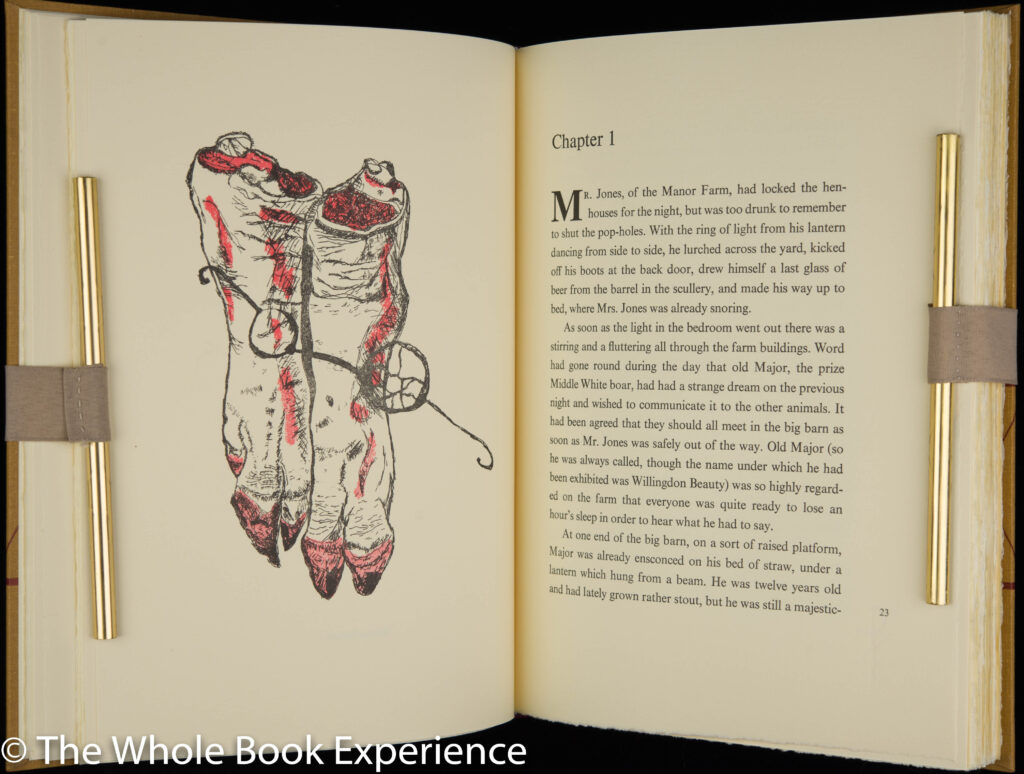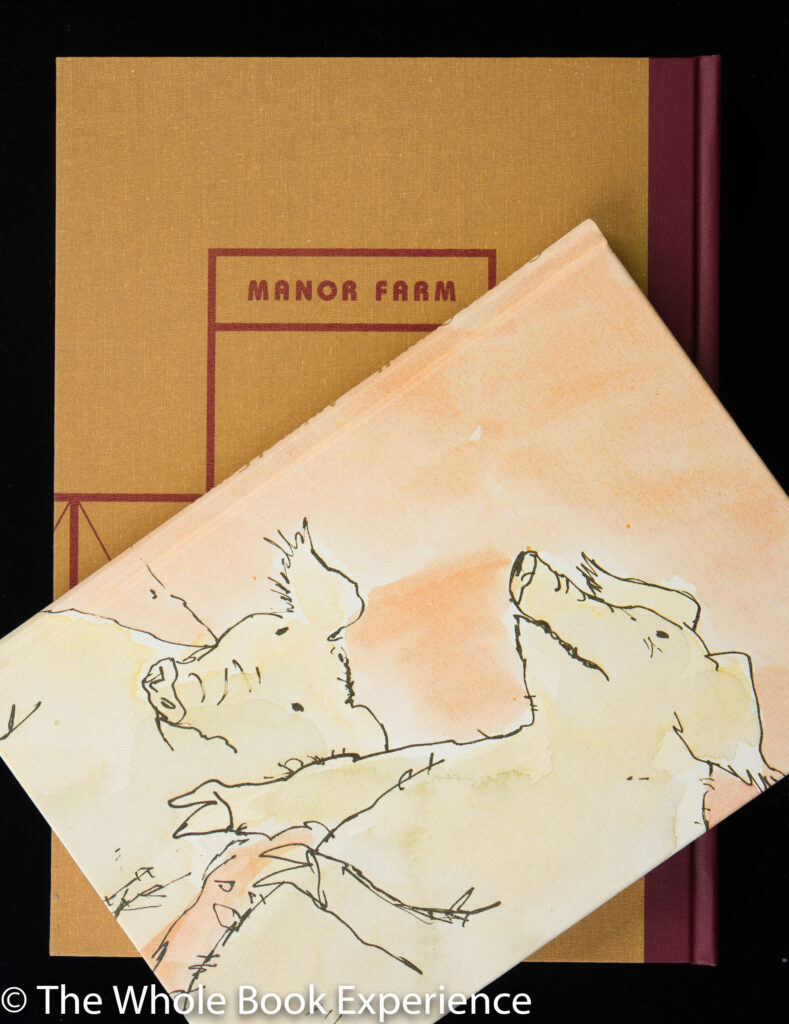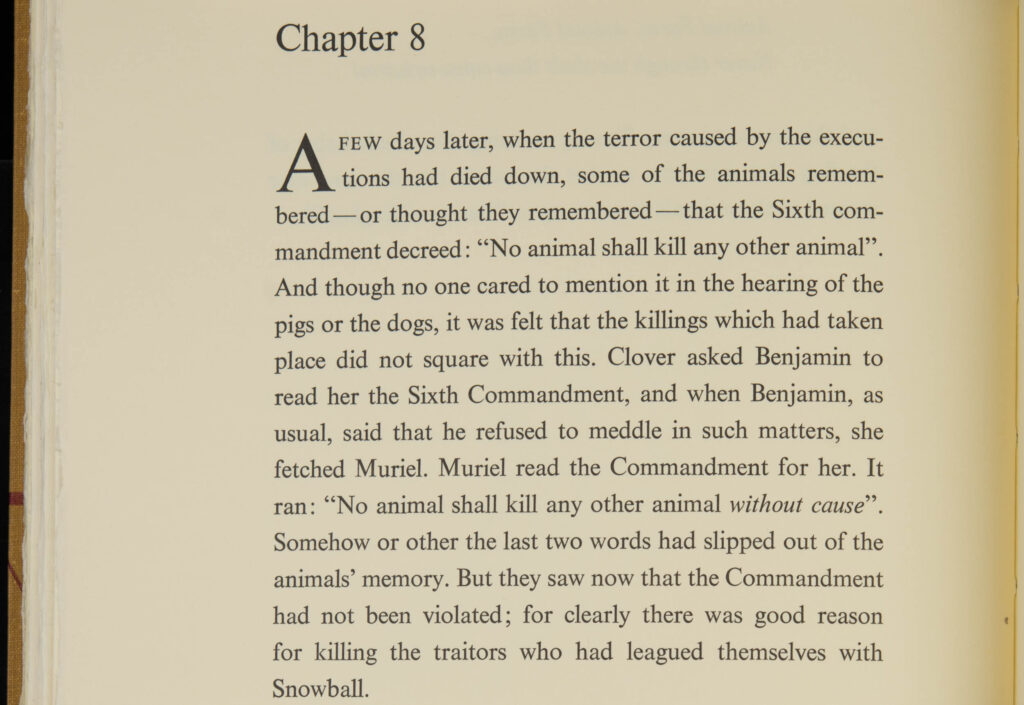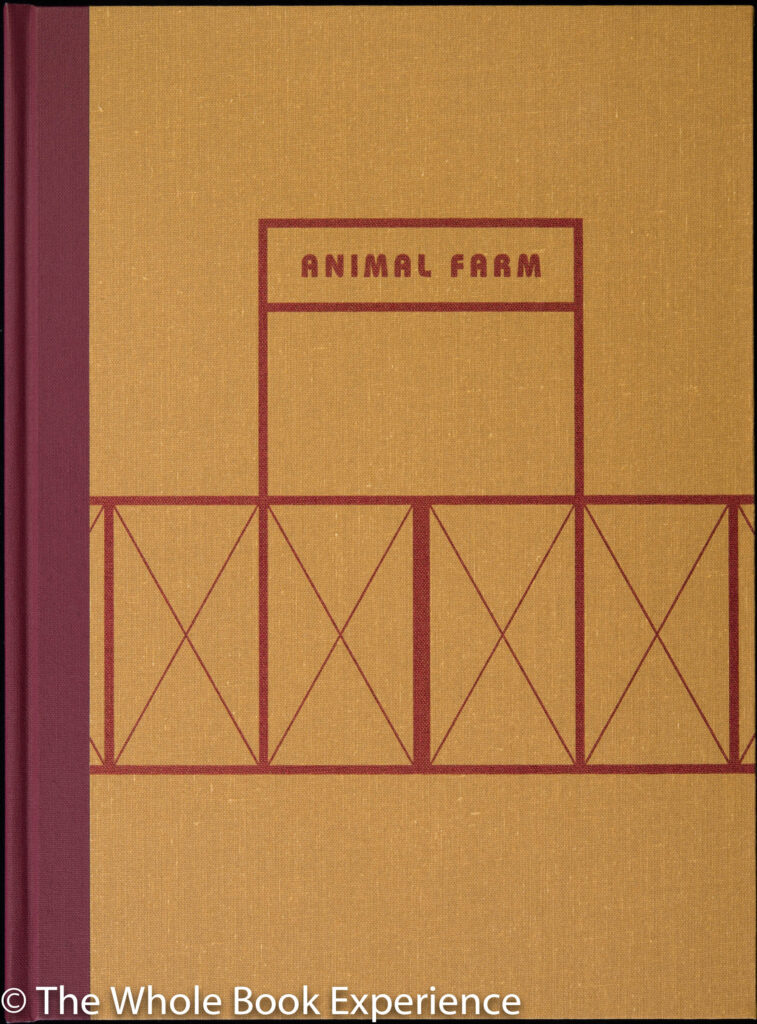
Now, why in the world was I looking for a happy ending to this book? Or even a happy(ish) ending? This is George Orwell of 1984 and I’m reading it in 2022.
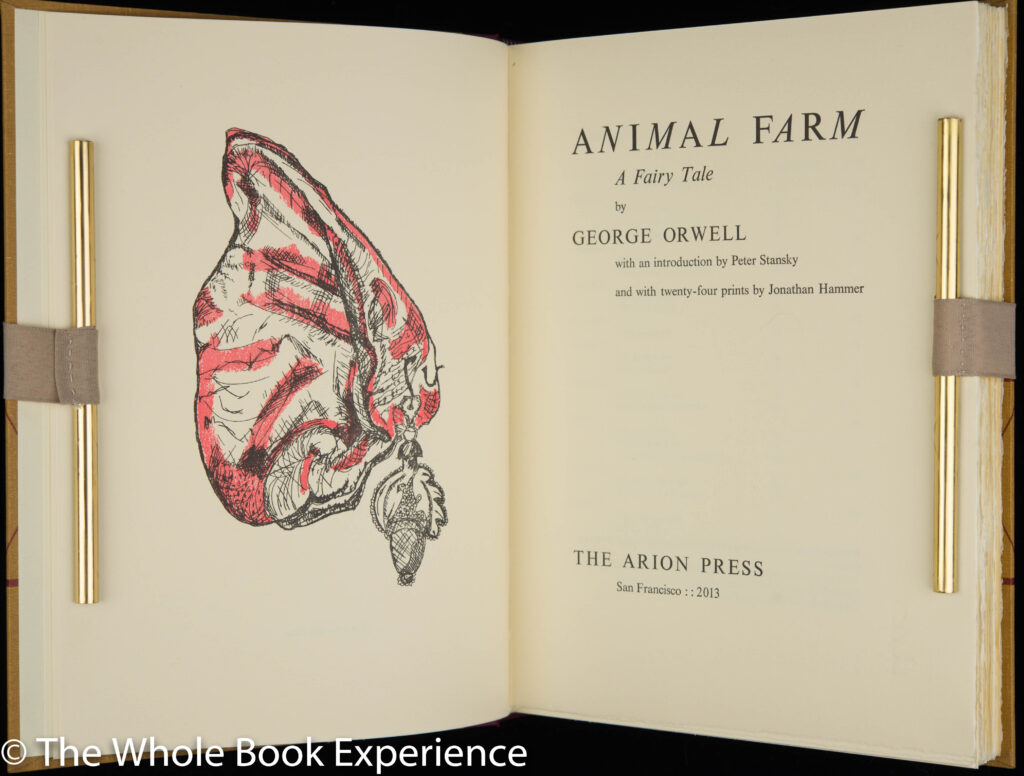
I guess maybe it was due to one of those reading coincidences, or intersections, that I love so much: I had just read Ursula Le Guin’s novella The Dispossessed, which was maybe the first believably successful and functioning description of an anarchist society I have read. Of course, in the U.S., where our leaders and pundits and party aparratniks have a label for anything even slightly left of far right, they would call Anarres a communist society. What, no property? No owners? No bosses? Whatever you call it, it worked much better in Le Guin’s novella than in Stalin’s real-life ruination and farcical implementation of collectivism, which Orwell is satirizing here. But I read The Dispossessed as hopeful and as a relatively well-implemented and functioning example of anarchist society.
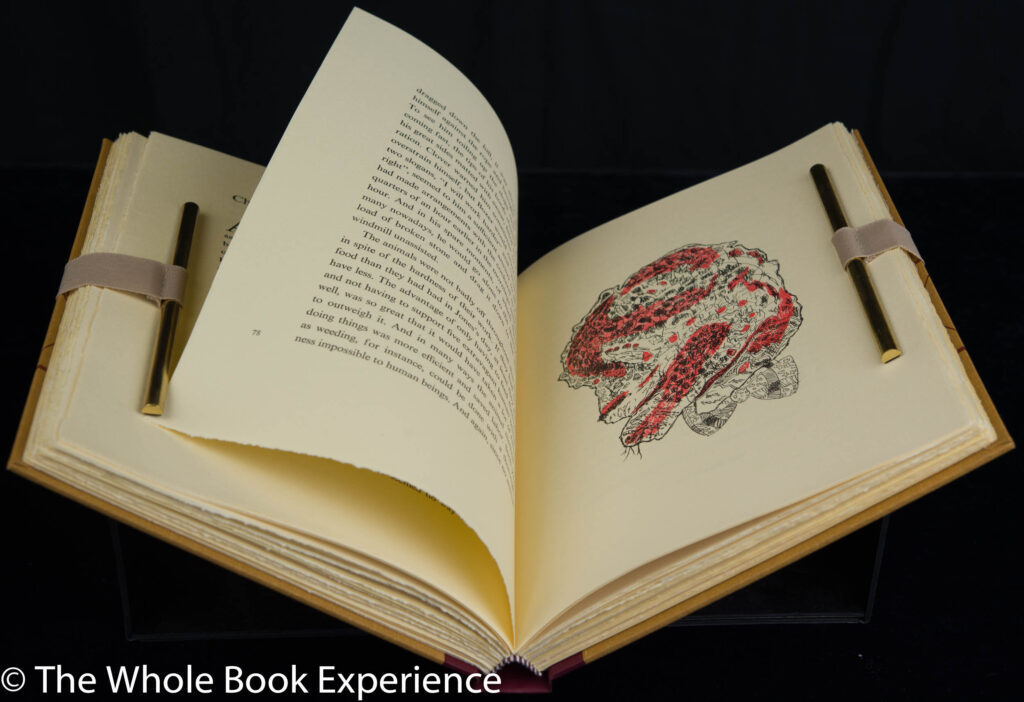
And in another intersection, I read a first novel by Andreï Makine, Requiem for a Lost Empire that covers three generations of a family living through the Russian revolution, Stalin, and the cold war. That reading was inspired by the fact that another private press, Foolscap Press, is publishing one of his novels. So even as I had to pass on acquiring that edition, and a first Foolscap book, I read whatever my local library could offer up. A very good novel that makes me want the Foolscap edition even more but also one that spurred me to finally read one of the two Animal Farm editions on my shelf (I have the Folio Society edition illustrated by Quentin Blake, as well). I suppose the Makine novel should also have probably kept me from expecting a happy ending in Orwell’s satire. But I do try to keep my tea cup half full at least as much as it is half empty.
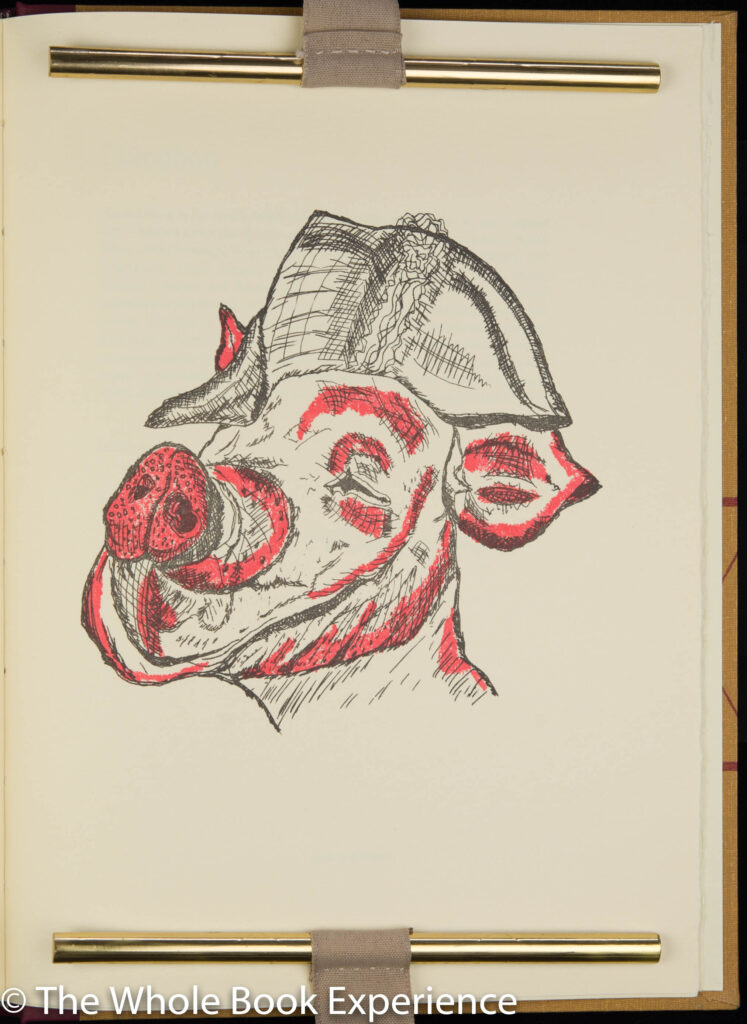
Alas, no happy ending here. Which makes sense as Orwell was not seeing the possibility of happiness in Stalin’s U.S.S.R. And his personal experience in the Spanish Civil War when the communists started eliminating the other leftist groups certainly gave him lots of material. [Side Note: I’ve always regretted not getting a copy of the Folio Society edition of his Homage to Catalonia about his experience in Spain. But maybe something I can read out of the library until I run across a copy second hand.]

The book starts simply and ideologically correct from the animal’s point of view, I suppose. The pig Major, who might represent Marx, or the idea from behind which Lenin, Trotsky, and Stalin evolve their tactics, states:
“I have little more to say. I merely repeat, remember always your duty of enmity towards Man and all his ways. Whatever goes upon two legs is an enemy. Whatever goes upon four legs, or has wings, is a friend. And remember also that in fighting against Man, we must not come to resemble him. Even when you have conquered him, do not adopt his vices. No animal must ever live in a house, or sleep in a bed, or wear clothes, or drink alcohol, or smoke tobacco, or touch money, or engage in trade. All the habits of Man are evil. And above all, no animal must ever tyrannize over his own kind. Weak or strong, clever or simple, we are all brothers. No animal must ever kill any other animal. All animals are equal.”
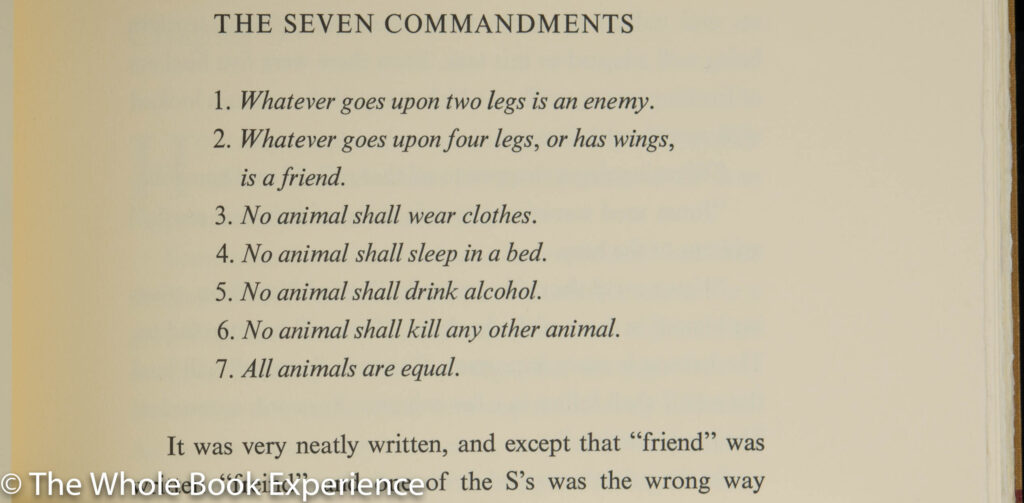
By the end of the book, Napolean/Stalin and all the pigs left on the farm (they’ve run off Trotsky/Snowflake) have violated every one of those duties at the expense of the other animals. And the seven commandments and universal rights of all animals have been whittled down to a single piggish one.

This is not one of my favorite Arion Press editions from my time as a subscriber. It’s a well-made and nice enough example of their regular editions and I’m happy to have it. But a lot of other fine press books would have been in front of it for the money, including some from the AP back catalog.
The illustrations don’t exactly inspire me but I liked them better after reading Jonathan Hammer’s Artist’s Note at the beginning of the book. He lives in the tiny village of Laguarres (“la guarra” is slang for “filthy sow,” he notes) where pigs, sheep, and chickens vastly outnumber the 30-odd humans. The divisions from the Spanish Civil War are still evident in the village where he feels the “collision/collusion of the sneering repressed self-deprecating right as it meets and melds with the disdainful well-meaning passive left.”
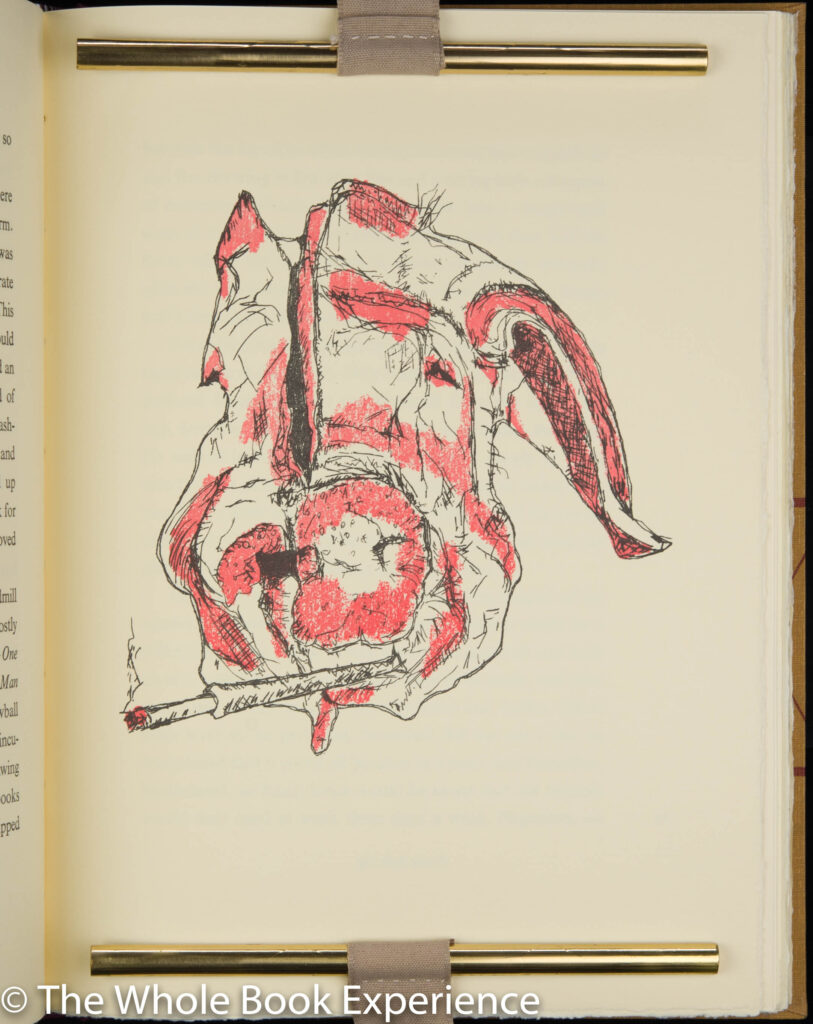
The artist notes that:
One reads Animal Farm as a parable, with a strong moral lesson to be learned, maximally pedagogical. There is not a lot of room for art.”
Kudos to him for still taking on the book when he felt that way. And for tying in his work with books and binding leather to the animal butchering that goes on around him in his artwork: with portions going towards food and those going towards skins for clothing, accessories, and books. I do also like the effect of the black and red illustrations on the creamy Zerkall ivory book paper.
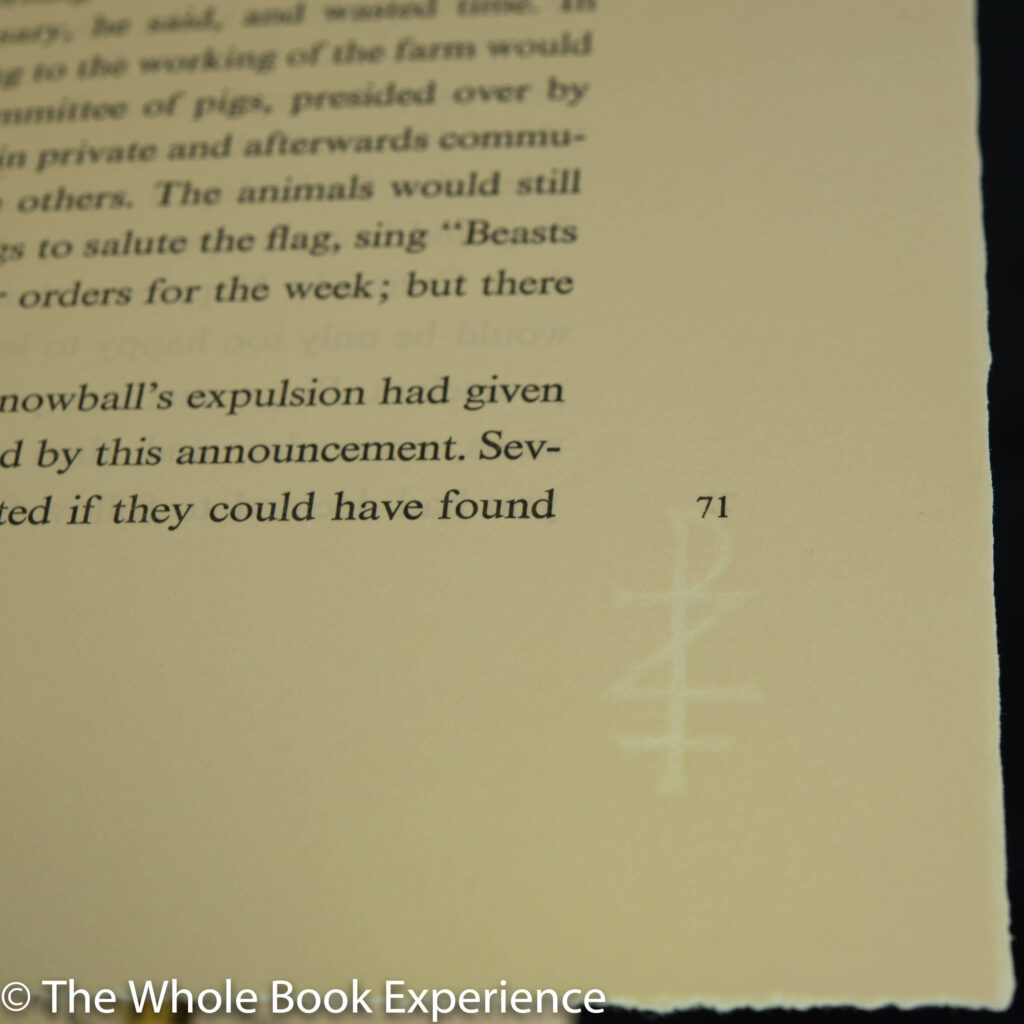
The page design makes for a very readable experience for what can be a pretty depressing read. Peter Stansky’s Introduction was very informative and appreciated. But I am also quite interested in Orwell’s own preface that was suppressed when the book was originally published. I’ll have to track that down somewhere, maybe in the recent Suntup Editions book that includes it among the bonus material of their edition. Although I don’t really want a third copy of this book.
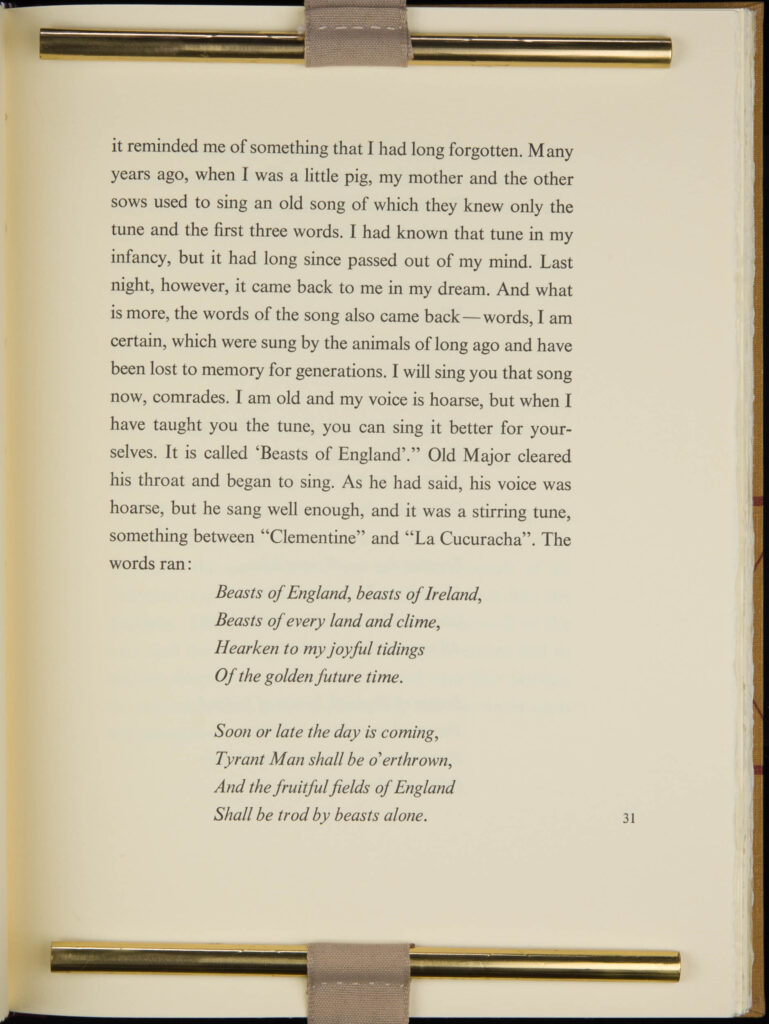
This book was published among the handful done during my daughter Kaelyn’s relatively short time at the press, so I gave her a bad time about the couple of typos I found in case she was the copy editor for that section. But she “could not recall,” ha ha.

The lessons of Animal Farm seem not to have been learned if they were ever really taught. So for our world and the majority of being in it, it seems that the (early) motto often bleated by the sheep remains true: “Four legs good, two legs bad!”

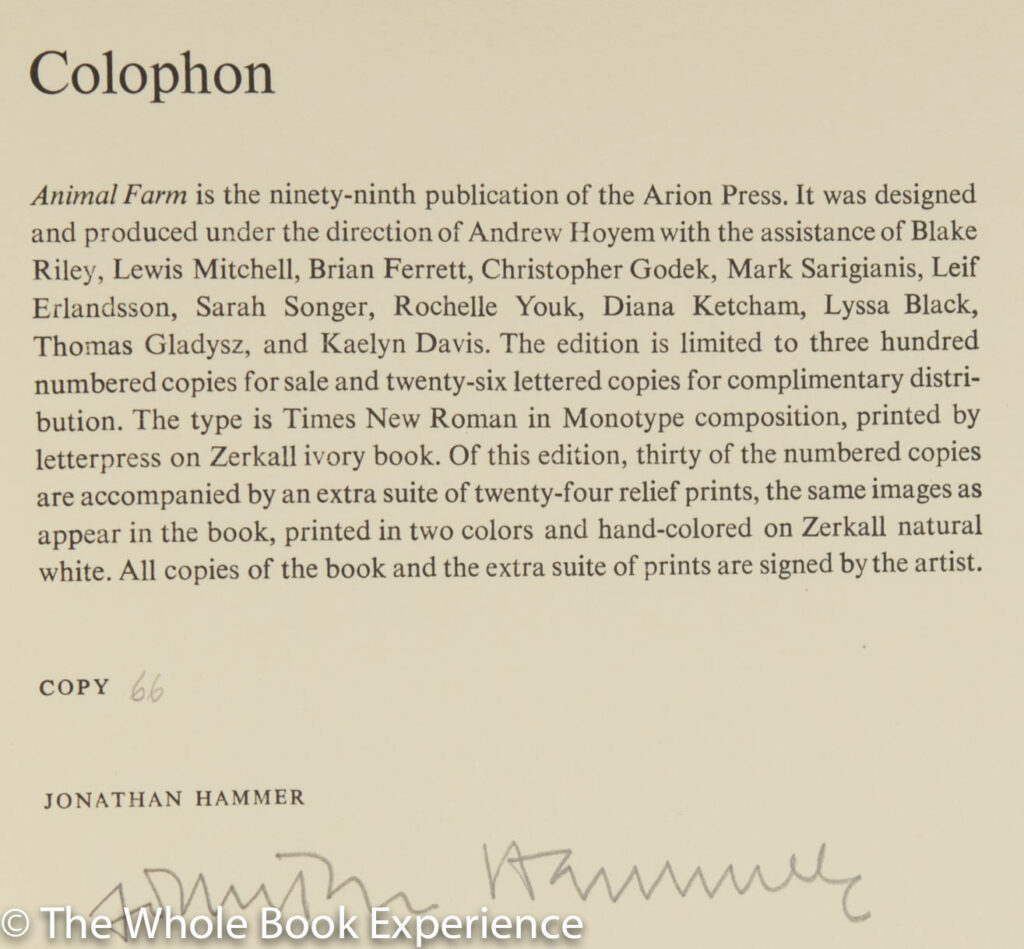
AVAILABILITY: Arion Press publication #99 was published in 2013 in an edition of 300 numbered copies. It is out of print and sold out at the press as of this writing.
